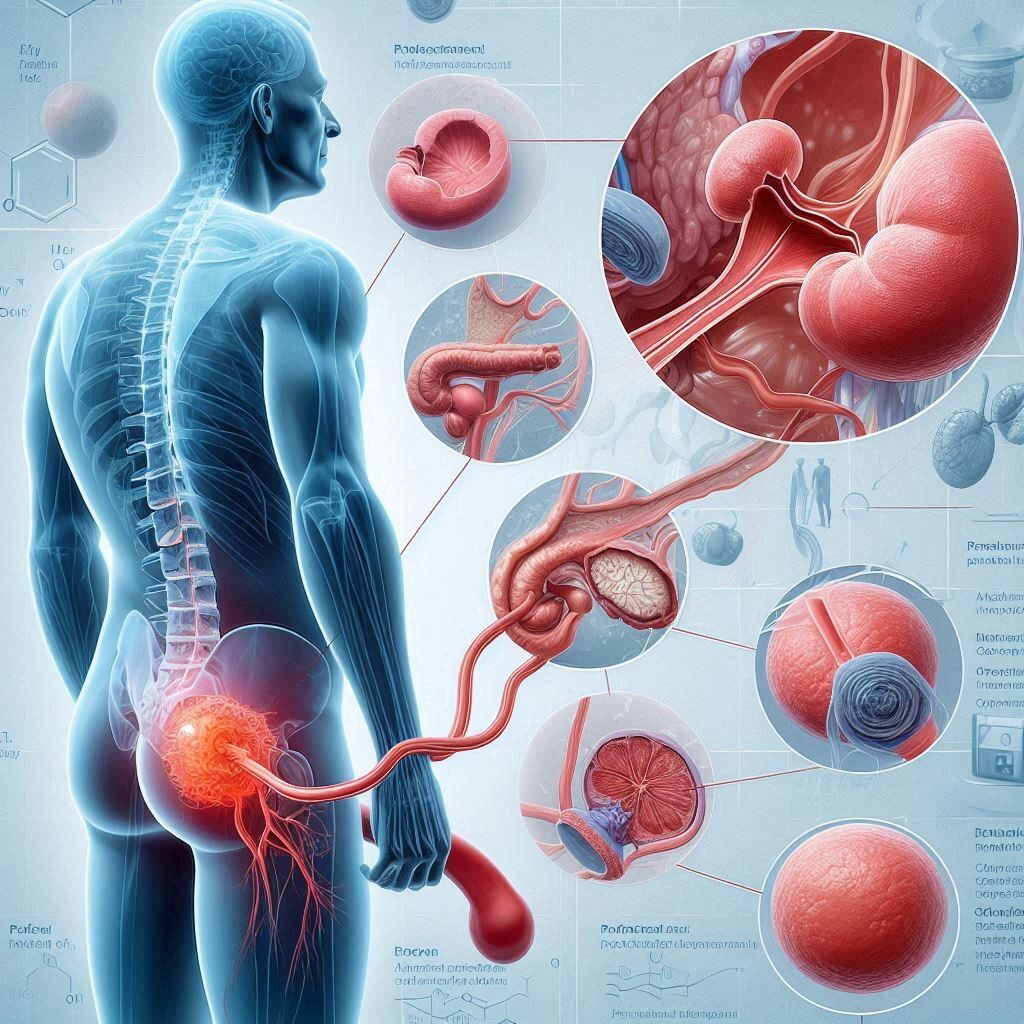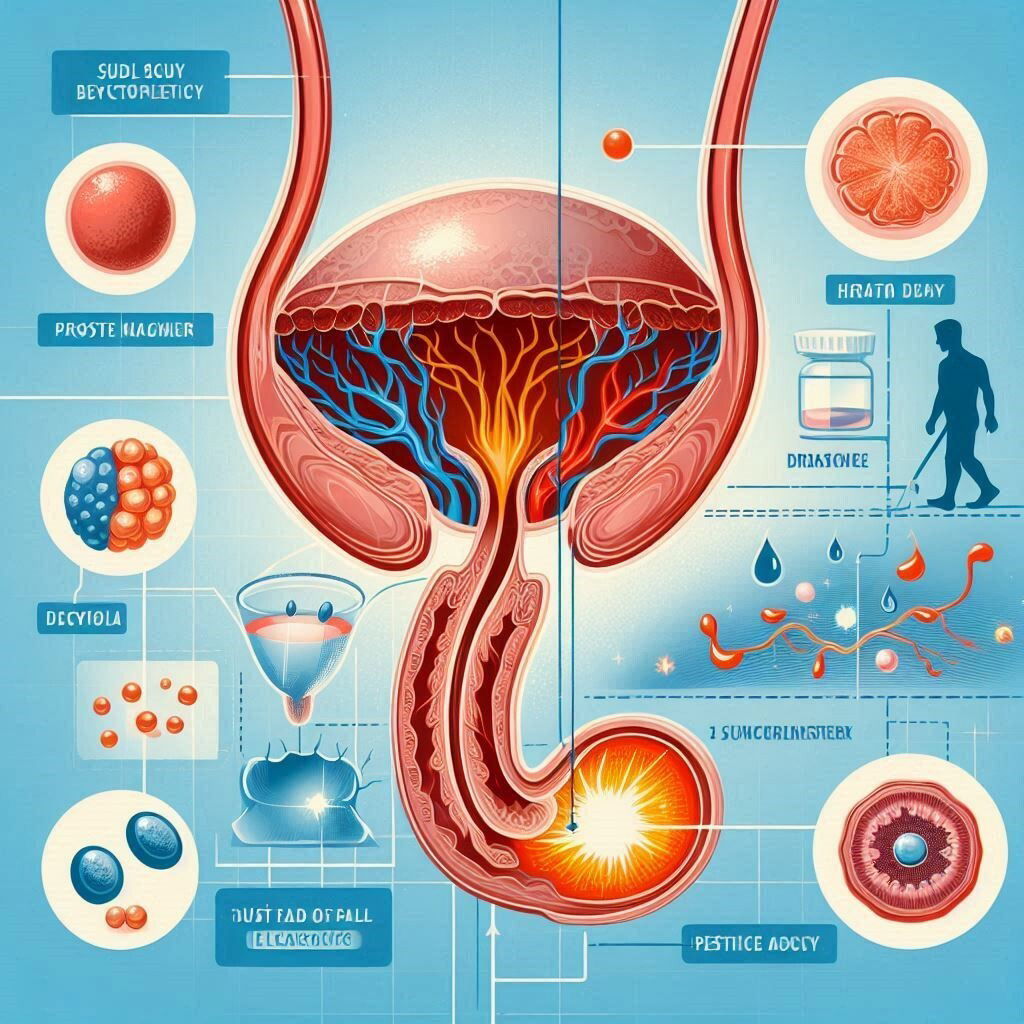Prostate Embolization Side Effects: Guide to Healthy Aging

Introduction
Prostate embolization is a novel treatment for benign prostatic hyperplasia or BPH that is less invasive than surgery. The treatment may improve overall quality of life. Nonetheless, discussing potential risks and complications, such as prostate embolization side effects, is important for individuals seeking to support healthy aging. The purpose of the guide is to discuss these potential undesirable effects, learn about the advantages of the suggested procedure, and consider possibilities of managing side effects associated with prostate embolization. If you seek to motivate your loved one, or you want to learn more to make the right decision on your behalf, you will find helpful tips in the guide.
How It Works
Prostate embolization may also be termed prostatic artery embolization or PAE. The procedure is minimally invasive and is done in order to treat BPH. Done under imaging guidance, the specialist injects particles into the arteries supplying the enlarged prostate, which reduces blood flow and causes the prostate to shrink. Eventually, the tissue that made the prostate grow will get replaced by thinner scar. Provision of timely blocking of the blood flow helps managing undesired symptoms.
Benefits of Prostate Embolization
- Minimal invasion: The benefits of the technique include delicate character that allows it to be minimally invasive compared to the surgery; and outpatient character of the operation that implies you can go home on the same day.
- Preserves Sexual Function: Unlike some surgical options, PAE has a lower risk of causing sexual dysfunction.
- Requires a Shorter Recovery: While PAE may require an overnight hospital stay, many patients are able to return to normal activities in less than one week.
Common Side Effects of Prostate Embolization
Immediate Side Effects
- Pain and Discomfort: Some pain and discomfort at the catheter insertion site or within the prostate are common immediately after the procedure. This can usually be managed with over-the-counter pain medications.
- Urinary Symptoms: Temporary worsening of urinary symptoms, such as increased frequency, urgency, or discomfort during urination, may occur. These symptoms typically improve within a few days to weeks.
Short-Term Side Effects
- Hematuria: Hematuria, or blood in the urine, is a common short-term side effect. It generally resolves on its own within a few days after the procedure.
- Urinary Tract Infection (UTI): A UTI may develop after PAE. Signs of a UTI include burning during urination, frequent urination, and cloudy or foul-smelling urine. Your healthcare provider can prescribe antibiotics to treat UTIs.
- Inflammation and Swelling: The prostate may become inflamed and swollen, causing discomfort and urinary symptoms. This will likely decrease as the prostate shrinks and heals.
Long-Term Side Effects
- Chronic Pain: Although rare, patients sometimes report persistent pelvic pain. If this happens to you, consult your healthcare provider.
- Erectile Dysfunction: Less common than with other treatments, men may still experience erectile dysfunction following PAE. It’s essential to bring this up with your doctor before the procedure.
Managing Side Effects
Pain Management
Effective pain management strategies include over-the-counter pain relievers, prescription medications if needed, and applying ice packs to the affected area.
Hydration and Diet
Try to stay well-hydrated and follow a balanced diet. Diet may help with recovery and prevent problems like urinary tract infections. Your diet should include plenty of fruits, vegetables, and whole grains.
Regular follow-up
Follow-up visits with your healthcare provider can help monitor your recovery and response to the treatment. Symptoms may also indicate a side effect of the procedure. For that reason, you need to also keep track of your symptoms so you can report to your healthcare provider any time your symptoms change.
Physical Activity
Light physical activity, like walking, may help circulation and favor recovery. Avoid any excess physical activity. Only start more intense activity when your healthcare provider allows you to.
Stress management
Stress management techniques like meditation, deep breathing exercises, or yoga can help with recovery and your overall wellbeing.
Comparison of prostate embolization to other treatments
PAE vs. Transurethral Resection of the prostate
Transurethral resection of the prostate is a surgical procedure that involves more risks, like bleeding and sexual dysfunction. Recovery is faster with PAE.
PAE vs. Medications
Medications for benign prostatic hyperplasia (BPH) are useful, but they come with side effects like dizziness, tiredness, and sexual dysfunction. They need to be taken for long periods of time. PAE is a more definitive solution.
PAE vs. Laser therapy
Laser therapy is another minimally invasive treatment for benign prostatic hyperplasia. It carries risks similar to those of PAE. So, which one is better ultimately depends on the patient preference after weighing the risks and benefits.
FREQUENTLY ASKED QUESTIONS
Q1. What is prostate embolization?
It is a procedure to treat benign prostatic hyperplasia. In this procedure, the blood flow to the enlarged prostate tissue is blocked, what makes it shrink and relieves urinary symptoms.
Q2. How many arteries supply the human prostate?
The human prostate is supplied by the two vasculature sides, which are the paired artery and vein. Each of these supplies the lobes of the prostate on either side of the body.
Q3. What patient preparation is needed?
Patient preparation for the procedure as: Meeting with a physician before the procedure. Patient heads up to scan the arterial system and ensure that the vein used is suitable.
Q4. What types of side effects do you need to know about?
Common side effects associated with the embolization process include pain, discomfort, temporary worsening of urinary symptoms, hematuria, urinary tract infections, and inflammation.
Q5. How long will side effects last?
Side effects lasting a few days to weeks after the procedure may be experienced in the body.
Q6. Can it cause erectile dysfunction?
Though the occurrence of erectile dysfunction is less compared with other methods, it can result with the patient.
Q7. Is prostate embolization safe for older adults?
Older male persons have a high chance to suffer from anemia, where they can benefit from prostate embolization. The process is less risky compared to other surgeries and has fewer possibilities of causing complications.
Q8. How can side effects be managed?
Effective pain management is a suitable way to curb pain on the affected site, followed by hydration of the body system to promote urinary flow and decrease infection. Balanced diet by the patient and carrying out physical exercises by him/her is also a suitable option to observe. Regular physical examination by the doctor should be carried out to the aged patient to ensure the vein is healed and the body is adhering to the treatment.
Conclusion
While helping to treat benign prostatic hyperplasia, prostate embolization can lead to a range of side effects associated with the procedure. Given that the enhanced invasiveness of the process may slow down the recovery, it is important to avoid the identified concerns and help male patients regain their health safely. For this reason, patients must stay involved in the process of choosing the treatment and monitoring the outcomes, allowing for a better quality of life in the long term. As long as they stay in touch with their care providers and follow the given recommendations, individuals can avoid side effects and recover effectively.
